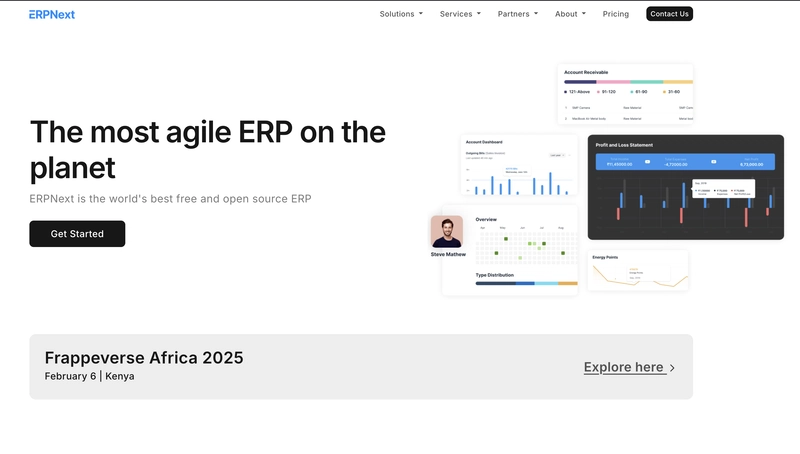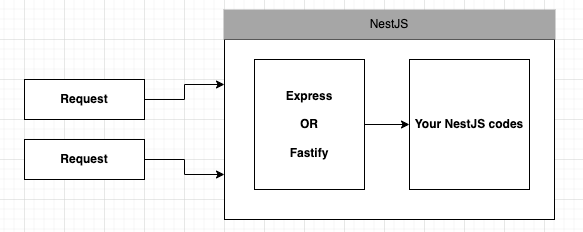Tutorial 10: Building and Using Custom UI Components in UIKit
UIKit provides a powerful framework for building custom user interfaces in iOS applications. Custom UI components can enhance the user experience by making your app unique and interactive. In this tutorial, we will create two custom components: MoodButton – A custom button that changes its appearance based on mood (Happy, Sad, Neutral). MoodSlider – A custom slider that changes its color based on mood level. Step 1: Setting up the Project First, make sure you have a project set up in Xcode or use Visual Studio Code (VSCode) with Swift and UIKit support. Then, create a new file where you’ll write your custom UI components. Step 2: Defining a Mood Enum We start by creating an enum to represent different moods. This helps categorize the button and slider’s behavior. import UIKit enum Mood { case happy case sad case neutral } Step 3: Creating the Custom MoodButton Next, we’ll define a MoodButton class. This button will change its background color depending on the current mood (happy, sad, neutral). We also provide functionality to cycle through moods when tapped. class MoodButton: UIButton { var mood: Mood = .neutral { didSet { updateBackgroundColor(for: mood) } } private func updateBackgroundColor(for mood: Mood) { switch mood { case .happy: self.backgroundColor = .yellow case .sad: self.backgroundColor = .blue case .neutral: self.backgroundColor = .gray } } override init(frame: CGRect) { super.init(frame: frame) setUpButton() } required init?(coder: NSCoder) { super.init(coder: coder) setUpButton() } private func setUpButton() { self.layer.cornerRadius = 10 self.clipsToBounds = true self.addTarget(self, action: #selector(buttonTapped), for: .touchUpInside) } @objc private func buttonTapped() { // Simulate mood change on tap switch mood { case .happy: mood = .sad case .sad: mood = .neutral case .neutral: mood = .happy } } } Step 4: Creating the Custom MoodSlider The MoodSlider is another custom component that changes its appearance based on the slider’s value. It will display different colors for sad (blue), neutral (gray), and happy (yellow) moods. class MoodSlider: UISlider { var moodLevel: Float = 0.5 { didSet { updateSliderAppearance() } } private func updateSliderAppearance() { if moodLevel 0.7 { self.minimumTrackTintColor = .yellow // Happy } else { self.minimumTrackTintColor = .gray // Neutral } } override init(frame: CGRect) { super.init(frame: frame) setUpSlider() } required init?(coder: NSCoder) { super.init(coder: coder) setUpSlider() } private func setUpSlider() { self.minimumValue = 0 self.maximumValue = 1 self.value = moodLevel self.addTarget(self, action: #selector(sliderValueChanged), for: .valueChanged) } @objc private func sliderValueChanged() { moodLevel = self.value } } Step 5: Setting Up the ViewController Finally, we need a ViewController to bring everything together. This is where we will add our MoodButton and MoodSlider to the view, giving them specific positions on the screen. class ViewController: UIViewController { var moodButton: MoodButton! var moodSlider: MoodSlider! override func viewDidLoad() { super.viewDidLoad() self.view.backgroundColor = .white // Set up MoodButton moodButton = MoodButton(frame: CGRect(x: 100, y: 150, width: 200, height: 50)) moodButton.setTitle("Change Mood", for: .normal) self.view.addSubview(moodButton) // Set up MoodSlider moodSlider = MoodSlider(frame: CGRect(x: 50, y: 250, width: 300, height: 50)) self.view.addSubview(moodSlider) } } Step 6: Running the App Now that we have set up the custom components, run the app in the simulator or on a real device. You’ll see the following: • A MoodButton with a title of “Change Mood”. When tapped, it cycles through happy (yellow), sad (blue), and neutral (gray) moods. • A MoodSlider that changes its color based on the value, with blue for sad, yellow for happy, and gray for neutral. Conclusion By creating custom UI components like MoodButton and MoodSlider, you can provide users with interactive and engaging elements in your iOS app. These custom components can be reused across your project to ensure consistency and a better user experience. ⸻ Now, you can try adding more features to these components, like custom animations, to make them even more engaging!

UIKit provides a powerful framework for building custom user interfaces in iOS applications. Custom UI components can enhance the user experience by making your app unique and interactive. In this tutorial, we will create two custom components:
- MoodButton – A custom button that changes its appearance based on mood (Happy, Sad, Neutral).
- MoodSlider – A custom slider that changes its color based on mood level.
Step 1: Setting up the Project
First, make sure you have a project set up in Xcode or use Visual Studio Code (VSCode) with Swift and UIKit support. Then, create a new file where you’ll write your custom UI components.
Step 2: Defining a Mood Enum
We start by creating an enum to represent different moods. This helps categorize the button and slider’s behavior.
import UIKit
enum Mood {
case happy
case sad
case neutral
}
Step 3: Creating the Custom MoodButton
Next, we’ll define a MoodButton class. This button will change its background color depending on the current mood (happy, sad, neutral). We also provide functionality to cycle through moods when tapped.
class MoodButton: UIButton {
var mood: Mood = .neutral {
didSet {
updateBackgroundColor(for: mood)
}
}
private func updateBackgroundColor(for mood: Mood) {
switch mood {
case .happy:
self.backgroundColor = .yellow
case .sad:
self.backgroundColor = .blue
case .neutral:
self.backgroundColor = .gray
}
}
override init(frame: CGRect) {
super.init(frame: frame)
setUpButton()
}
required init?(coder: NSCoder) {
super.init(coder: coder)
setUpButton()
}
private func setUpButton() {
self.layer.cornerRadius = 10
self.clipsToBounds = true
self.addTarget(self, action: #selector(buttonTapped), for: .touchUpInside)
}
@objc private func buttonTapped() {
// Simulate mood change on tap
switch mood {
case .happy:
mood = .sad
case .sad:
mood = .neutral
case .neutral:
mood = .happy
}
}
}
Step 4: Creating the Custom MoodSlider
The MoodSlider is another custom component that changes its appearance based on the slider’s value. It will display different colors for sad (blue), neutral (gray), and happy (yellow) moods.
class MoodSlider: UISlider {
var moodLevel: Float = 0.5 {
didSet {
updateSliderAppearance()
}
}
private func updateSliderAppearance() {
if moodLevel < 0.3 {
self.minimumTrackTintColor = .blue // Sad
} else if moodLevel > 0.7 {
self.minimumTrackTintColor = .yellow // Happy
} else {
self.minimumTrackTintColor = .gray // Neutral
}
}
override init(frame: CGRect) {
super.init(frame: frame)
setUpSlider()
}
required init?(coder: NSCoder) {
super.init(coder: coder)
setUpSlider()
}
private func setUpSlider() {
self.minimumValue = 0
self.maximumValue = 1
self.value = moodLevel
self.addTarget(self, action: #selector(sliderValueChanged), for: .valueChanged)
}
@objc private func sliderValueChanged() {
moodLevel = self.value
}
}
Step 5: Setting Up the ViewController
Finally, we need a ViewController to bring everything together. This is where we will add our MoodButton and MoodSlider to the view, giving them specific positions on the screen.
class ViewController: UIViewController {
var moodButton: MoodButton!
var moodSlider: MoodSlider!
override func viewDidLoad() {
super.viewDidLoad()
self.view.backgroundColor = .white
// Set up MoodButton
moodButton = MoodButton(frame: CGRect(x: 100, y: 150, width: 200, height: 50))
moodButton.setTitle("Change Mood", for: .normal)
self.view.addSubview(moodButton)
// Set up MoodSlider
moodSlider = MoodSlider(frame: CGRect(x: 50, y: 250, width: 300, height: 50))
self.view.addSubview(moodSlider)
}
}
Step 6: Running the App
Now that we have set up the custom components, run the app in the simulator or on a real device. You’ll see the following:
• A MoodButton with a title of “Change Mood”. When tapped, it cycles through happy (yellow), sad (blue), and neutral (gray) moods.
• A MoodSlider that changes its color based on the value, with blue for sad, yellow for happy, and gray for neutral.
Conclusion
By creating custom UI components like MoodButton and MoodSlider, you can provide users with interactive and engaging elements in your iOS app. These custom components can be reused across your project to ensure consistency and a better user experience.
⸻
Now, you can try adding more features to these components, like custom animations, to make them even more engaging!






















































.jpg)
%20Abstract%20Background%20112024%20SOURCE%20Amazon.jpg)





















































































































![[The AI Show Episode 142]: ChatGPT’s New Image Generator, Studio Ghibli Craze and Backlash, Gemini 2.5, OpenAI Academy, 4o Updates, Vibe Marketing & xAI Acquires X](https://www.marketingaiinstitute.com/hubfs/ep%20142%20cover.png)































































































































![From drop-out to software architect with Jason Lengstorf [Podcast #167]](https://cdn.hashnode.com/res/hashnode/image/upload/v1743796461357/f3d19cd7-e6f5-4d7c-8bfc-eb974bc8da68.png?#)




































































































.png?#)





.jpg?#)
































_Christophe_Coat_Alamy.jpg?#)










































































































![Rapidus in Talks With Apple as It Accelerates Toward 2nm Chip Production [Report]](https://www.iclarified.com/images/news/96937/96937/96937-640.jpg)









































































































































